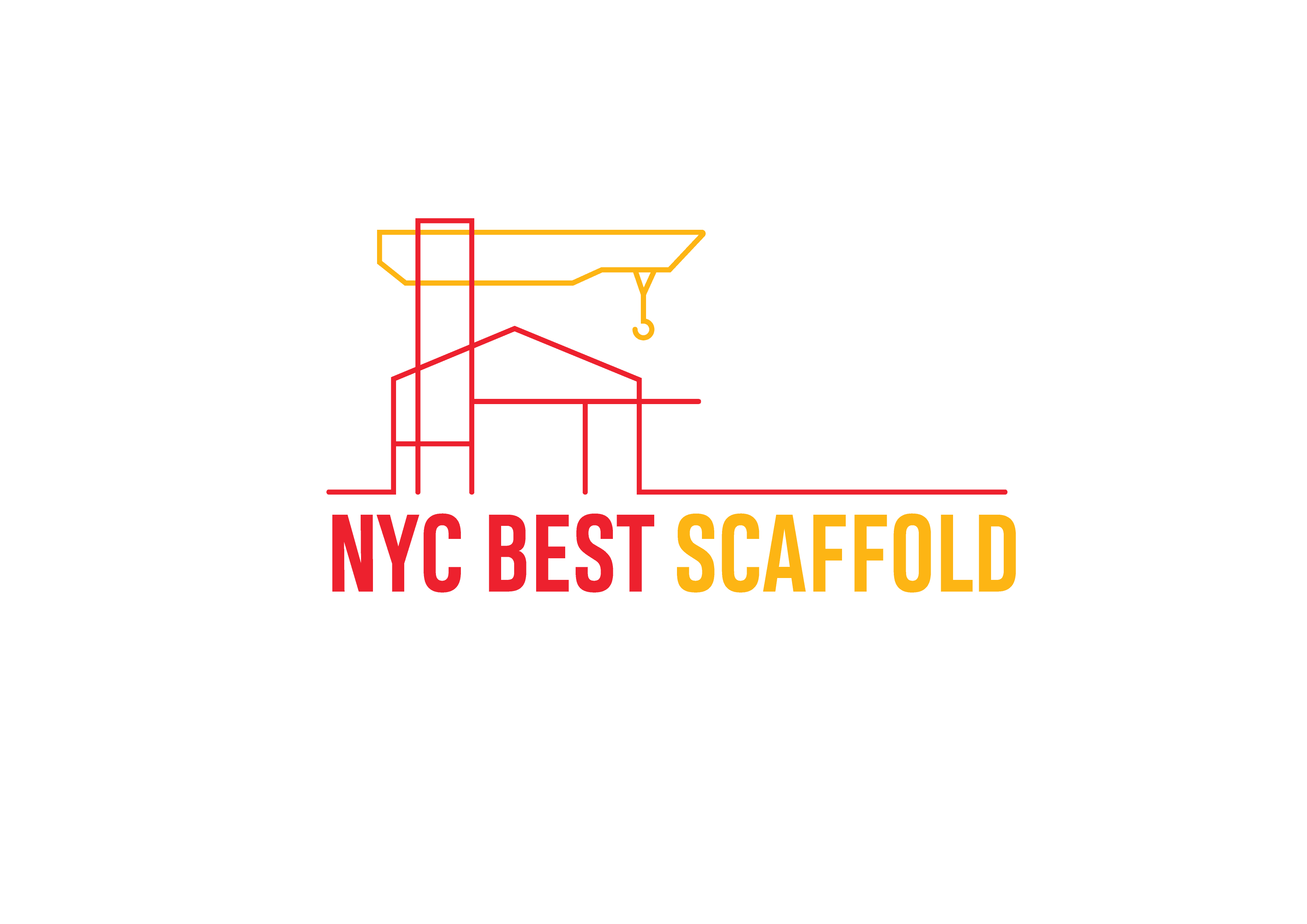New York City is home to some of the tallest, most complex, and legally-regulated construction projects in the world. Whether you’re building a commercial tower in Manhattan or renovating a storefront in Brooklyn, scaffolding is more than just a temporary structure — it’s a legal necessity and safety solution.
This guide helps you understand:
- Why working with a licensed scaffolding company in New York matters
- Which scaffolding types are best for your project
- How to comply with NYC building laws and safety regulations
- What to expect during inspection and permit approvals
What Is Scaffolding and Why Does NYC Construction Require It?
Scaffolding is a temporary platform used to support workers and materials during construction, maintenance, or repair. In New York City, scaffolding is legally required on many buildings that are more than 40 feet tall or located on busy public sidewalks.
Key Functions:
- Protect pedestrians with sidewalk bridges
- Allow workers to access high elevations safely
- Prevent debris from falling onto streets
In NYC, failing to use approved scaffolding can result in severe legal penalties, DOB violations, and project shutdowns.
Why You Need a Licensed Scaffolding Company in New York
Hiring a certified scaffold installer isn’t optional in NYC — it’s the law. A licensed scaffolding company ensures:
- Compliance with OSHA and NYC Department of Buildings (DOB) regulations
- Professional installation of safe scaffold systems
- Timely maintenance and dismantling
- Liability insurance and safety documentation
These companies also handle required permit applications, including Site Safety Plans, scaffold drawings, and daily logs.
📍NYC Fact: Over 7,000 active scaffolding permits are issued in New York City at any given time.
Scaffold Types Used in NYC Construction
Different projects require different scaffold systems. An experienced company helps you select the best option based on building type, height, location, and load capacity.
Common Scaffold Systems in New York:
| Scaffold Type | Ideal For | Notes |
|---|---|---|
| Frame Scaffold | Low- to mid-rise buildings | Simple to install, cost-effective |
| Suspended Scaffold | Skyscrapers & towers | Requires professional rigging |
| System Scaffold | Complex structures | Modular, strong, customizable |
| Sidewalk Shed / Bridge | Public areas | Required for pedestrian protection |
| Rolling Scaffold | Indoor use | Mobile and adjustable, less common outdoors |
Local Scaffold Safety Regulations in NYC
OSHA Guidelines:
- Platforms must support 4x intended load
- Guardrails and toe boards required
- Scaffold height-to-base ratio must be within limits
NYC Department of Buildings Requirements:
- Scaffolding over 40 ft requires special permits
- Licensed rigger must be present
- DOB inspection reports must be submitted regularly
- Sidewalk bridges required for facades over 6 stories
⚠️ Penalties for violating scaffold laws in NYC can exceed $25,000 per site.
Permits, Paperwork & Compliance in New York
A professional scaffolding company handles:
- Scaffold Work Permit Application (PW2)
- Site Safety Plans for buildings over 15 stories
- LL11 (FISP) compliance for facade inspections
- Insurance documents: GL, Workers’ Comp, Disability
- Installation drawings stamped by a NYC licensed engineer
These documents must be submitted before erecting any scaffold in NYC’s five boroughs: Manhattan, Brooklyn, Queens, Bronx, and Staten Island.
Scaffold Safety Checklist: Do’s and Don’ts
Do’s:
- Inspect Daily: Walk the scaffold and check base, planks, guardrails
- Train Workers: Ensure staff are trained and certified
- Secure Anchors: Use wall ties and stabilizers
- Label Weight Limits: Never exceed platform load capacity
- Cover Weather Hazards: Install netting, wind braces, and anti-slip surfaces
Don’ts:
- Don’t modify scaffolds without a certified engineer
- Don’t store heavy material above planked platforms
- Don’t ignore rust, bent poles, or loose joints
- Don’t operate during storms, ice, or high winds
- Don’t remove supports before structural sign-off
Choosing the Right Scaffold Provider in NYC
Key Evaluation Points:
- License & Certifications: Must be DOB-approved
- Experience: Ask for recent NYC projects
- Insurance: Verify coverage for accidents and property damage
- Availability: Must be able to install on tight construction timelines
- Knowledge of Local Boroughs: Familiarity with rules in Bronx, Queens, Brooklyn, etc.
✅ Bonus Tip: Ask if they offer 24/7 emergency support — useful for sudden DOB site visits or damage during storms.
Borough-Specific Scaffold Insights
Manhattan
High-rise rules are strict. Expect suspended scaffold use with DOB site safety manager requirements.
Bronx
Many residential buildings with aged facades. Most projects involve sidewalk sheds + frame scaffolding.
Queens
Mixed-use and light commercial zones. Permits still required, but scaffold access is easier.
Brooklyn
Historic buildings = specialized anchoring. Often requires engineer-stamped plans.
Staten Island
Fewer DOB delays, ideal for single-family homes and warehouse installations.
Cost of Scaffolding Services in NYC
Pricing depends on:
- Scaffold type (frame vs. suspended)
- Height and coverage area
- Rental duration
- Borough regulations
- Permit complexity
Average Scaffold Cost Estimates:
| Project Type | Estimated Cost Range |
|---|---|
| 1–2 Story Frame Scaffold | $1,500 – $3,500 |
| Sidewalk Shed (50 ft) | $4,000 – $8,000 |
| Full Tower (Suspended) | $10,000 – $50,000+ |
| Weekly Maintenance | $300 – $1,000 |
Final Thoughts: Scaffolding Is the Backbone of Safe NYC Construction
Hiring a certified scaffolding company in New York is not just a legal step — it’s a smart business move. Proper scaffolding ensures:
- Worker safety
- Pedestrian protection
- Project timeline control
- Fewer DOB violations
- Higher construction quality
The more complex your structure, the more important it is to work with experienced professionals who understand New York’s building laws, borough-specific logistics, and the fast-paced expectations of NYC contractors.
Next Steps for Contractors & Property Owners in NYC:
- Schedule an inspection with a local scaffold engineer
- Apply for permits through NYC DOB
- Hire a licensed scaffold installer in your borough
- Plan safety checks before, during, and after work
- Document everything for future audits and compliance

